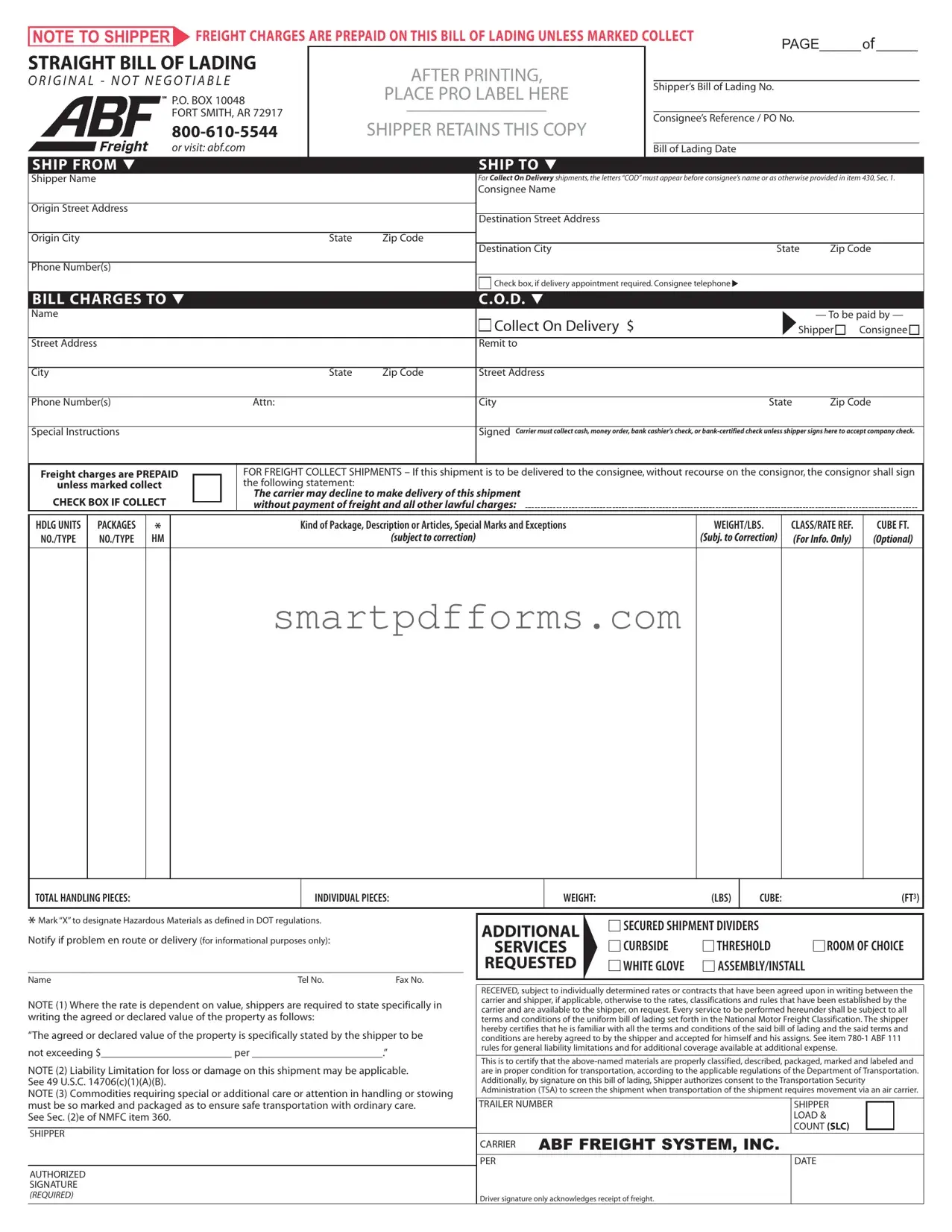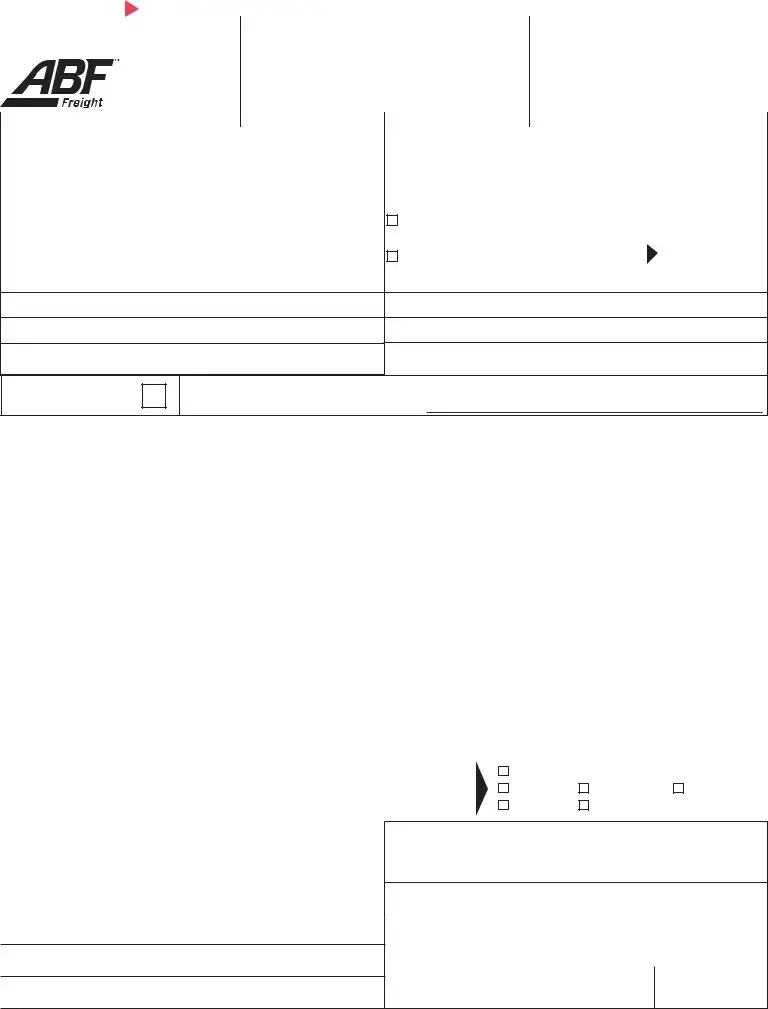What is an ABF Freight Bill of Lading, and when is it used?
An ABF Freight Bill of Lading is a crucial document issued by ABF Freight System, Inc., serving as a contract between the shipper and the carrier. It is used when goods are transported, detailing the type, quantity, and destination of the cargo. This document also serves as a receipt for the shipment, includes instructions for the carrier regarding handling, and indicates how freight charges are to be paid.
No, the ABF Freight Bill of Lading is a straight bill of lading, which means it is not negotiable. The text "ORIGINAL - NOT NEGOTIABLE" is printed on the document to specify that it represents a direct shipment to the consignee and does not allow for the transfer of goods by transferring the document.
Freight charges should be clearly marked on the ABF Freight Bill of Lading to indicate whether they are prepaid or collect. If the charges are prepaid, it means the shipper has already paid for the freight charges. If marked collect, the consignee is responsible for the freight charges upon delivery. This determination must be made before the shipment is dispatched.
COD stands for Collect on Delivery. If a shipment is sent COD, the carrier is responsible for collecting the shipment's cost, and possibly the freight charges, from the consignee at the time of delivery. The letters "COD" must be prominently displayed before the consignee’s name, or as instructed in item 430, Sec. 1 of the Bill of Lading instructions. The shipper must also specify the amount to be collected and the method of payment accepted.
Yes, company checks can be accepted for COD shipments if the shipper authorizes this method of payment. This authorization is indicated on the Bill of Lading through the shipper's signature in the designated area specifying that a company check can be accepted instead of cash, money order, or other forms of certified funds. Without this authorization, the carrier is expected to collect payment via cash or other certified methods.
By signing the ABF Freight Bill of Lading, the shipper certifies several important points: that the described goods are correctly classified, described, packaged, marked, and labeled for transportation according to Department of Transportation (DOT) regulations; that the goods are in proper condition for transportation; and that the shipper agrees to all terms and conditions of the bill of lading. Additionally, the signature grants the Transportation Security Administration (TSA) consent to screen the shipment if necessary.
The liability limitations related to loss or damage of the shipment are referenced by the document, directing users to 49 U.S.C. 14706(c)(1)(A)(B) and item 780-1 ABF 111 rules. These references outline the general liability limitations that apply to the shipment unless additional coverage is secured at an extra expense. Shippers who require greater protection should inquire about additional coverage.
Yes, the ABF Freight Bill of Lading provides options for indicating additional services, such as curbside delivery, threshold delivery, room of choice, and "white glove service" which includes assembly or installation. These services must be requested by the shipper and may involve extra charges. It ensures that the carrier and the consignee understand the level of service expected upon delivery.

